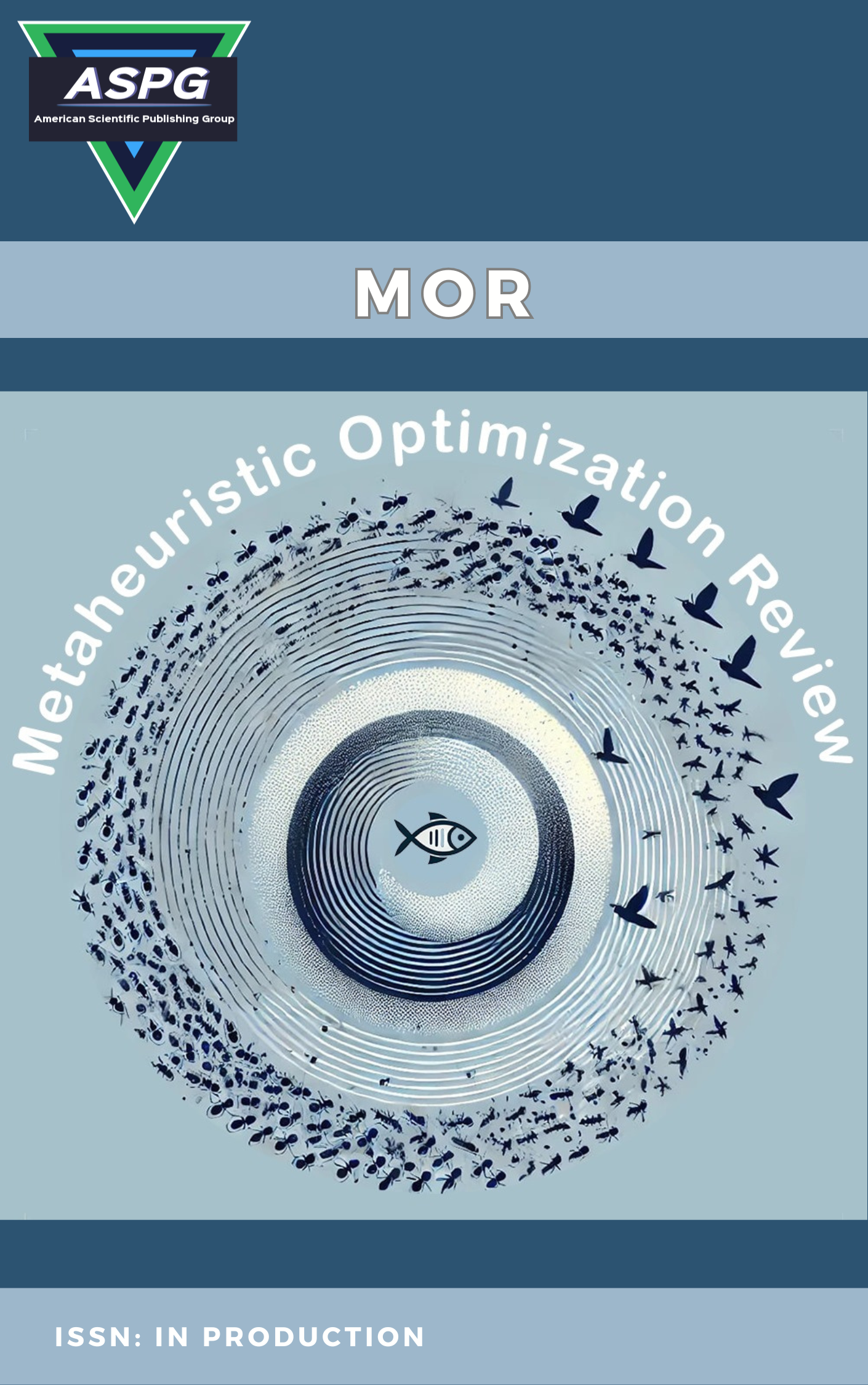

Volume 4 , Issue 2 , PP: 24-32, 2025 | Cite this article as | XML | Html | PDF | Full Length Article
Mahmoud Elshabrawy Mohamed 1 * , Ehsaneh khodadadi 2
Doi: https://doi.org/10.54216/MOR.040203
We should subject artificial intelligence (AI) to neurological diagnostics for detailed ethical consideration and examination of compliance questions. When applied to neuroimaging, these AI technologies improve diagnostic performance and treatment planning; however, they give rise to issues such as algorithmic bias, data privacy, and the intelligibility of resulting AI-generated insights. The issue of bias is related to the necessity of obtaining informed consent because of using patient data for training models of AI, which in turn will create more problems since the machine learning process will be based on data that is itself bigoted. In addition, the self-governing characteristic of AI systems creates additional concerns regarding responsibility for misuse; it is still unclear who is to blame when an AI system commits an obvious mistake, like misdiagnosis or incorrect treatment. Governance structures must adapt to these questions to guarantee that healthcare AI is ethically upraised, transparent, and fair. This review underscores the importance of interprofessional relationships between researchers and scholars, clinicians and practitioners, and ethicists when dealing with these issues. As social safeguards, demographic benchmarks and best practices have to be set, it enables the medical field to benefit from the opportunities provided by AI in neurological diagnostics and uphold the patient's respect for their rights while pushing for equal access to equal quality health care. Lastly, it becomes imperative to counter these ethical questions, which is imperative for the effectiveness of AI technologies and for building public acceptance of this technology in clinical practice.
Ethical challenges , Regulatory compliance , AI technologies , Neurological diagnostics , Algorithmic bias , Data privacy
[1] H. R. Saeidnia, S. G. Hashemi Fotami, B. Lund, and N. Ghiasi, "Ethical Considerations in Artificial Intelligence Interventions for Mental Health and Well-Being: Ensuring Responsible Implementa-tion and Impact," Soc Sci, vol. 13, no. 7, p. 381, Jul. 2024, doi: 10.3390/SOCSCI13070381/S1.
[2] N. Norori, Q. Hu, F. M. Aellen, F. D. Faraci, and A. Tzovara, "Addressing bias in big data and AI for health care: A call for open science," Patterns, vol. 2, no. 10, p. 100347, Oct. 2021, doi: 10.1016/J.PATTER.2021.100347.
[3] A. Salles and M. Farisco, "Neuroethics and AI ethics: a proposal for collaboration," BMC Neurosci, vol. 25, no. 1, pp. 1–10, Dec. 2024, doi: 10.1186/S12868-024-00888-7/PEER-REVIEW.
[4] D. D. Farhud and S. Zokaei, "Ethical Issues of Artificial Intelligence in Medicine and Healthcare," Iran J Public Health, vol. 50, no. 11, p. i, 2021, doi: 10.18502/IJPH.V50I11.7600.
[5] S. A. Alowais et al., "Revolutionizing healthcare: the role of artificial intelligence in clinical practice," BMC Medical Education 2023 23:1, vol. 23, no. 1, pp. 1–15, Sep. 2023, doi: 10.1186/S12909-023-04698-Z.
[6] V. Shankar, "Managing the Twin Faces of AI: A Commentary on 'Is AI Changing the World for Bet-ter or Worse?'" https://doi.org/10.1177/02761467241286483, Oct. 2024, doi 10.1177/02761467241286483.
[7] K. S. Kumar et al., "Artificial Intelligence in Clinical Oncology: From Data to Digital Pathology and Treatment," American Society of Clinical Oncology Educational Book, no. 43, May 2023, doi: 10.1200/EDBK_390084.
[8] P. K. Kopalle, M. Gangwar, and A. Uppal, "Commentary on 'AI is Changing the World: For Better or for Worse?,'" https://doi.org/10.1177/02761467241290813, vol. 44, no. 4, pp. 886–891, Oct. 2024, doi: 10.1177/02761467241290813.
[9] F. Gilbert, M. Ienca, and M. Cook, "How I became myself after merging with a computer: Does human-machine symbiosis raise human rights issues?," Brain Stimul, vol. 16, no. 3, pp. 783–789, May 2023, doi: 10.1016/J.BRS.2023.04.016.
[10] R. D. Truog and F. G. Miller, "Changing the Conversation About Brain Death," The American Journal of Bioethics, vol. 14, no. 8, pp. 9–14, 2014, doi: 10.1080/15265161.2014.925154.
[11] R. D. Truog and F. G. Miller, "Changing the Conversation About Brain Death," The American Journal of Bioethics, vol. 14, no. 8, pp. 9–14, 2014, doi: 10.1080/15265161.2014.925154.
[12] F. Li et al., "The AI revolution in glaucoma: Bridging challenges with opportunities," Prog Retin Eye Res, vol. 103, p. 101291, Nov. 2024, doi: 10.1016/J.PRETEYERES.2024.101291.
[13] S. K. Kononova, O. G. Sidorova, S. A. Fedorova, F. A. Platonov, V. L. Izhevskaya, and E. K. Khusnutdinova, "Bioethical issues of preventing hereditary diseases with late onset in the Sakha Republic (Yakutia)," Int J Circumpolar Health, vol. 73, Jul. 2014, doi: 10.3402/IJCH.V73.25062.
[14] O. Dobrodum and O. Kyvliuk, "Transhumanism and Posthumanism: Reflection of the Human Civilization Future," Philosophy and Cosmology, vol. 26, 2021, doi: 10.29202/PHIL-COSM/26/6.
[15] R. Dhawan, O. Shauly, D. Shay, K. Brooks, and A. Losken, "Growth in FDA-Approved Artificial In-telligence Devices in Plastic Surgery: A Key Look Into the Future," Aesthet Surg J, Oct. 2024, doi: 10.1093/ASJ/SJAE209.
[16] G. Chimuka, "Impact of artificial intelligence on patent law. Towards a new analytical framework – [ the Multi-Level Model]," World Patent Information, vol. 59, p. 101926, Dec. 2019, doi: 10.1016/J.WPI.2019.101926.
[17] H. Cope et al., "Routine omics collection is a golden opportunity for European human research in space and analog environments," Patterns, vol. 3, no. 10, Oct. 2022, doi: 10.1016/J.PATTER.2022.100550.
[18] R. Laudicella, G. A. Davidson, N. Dimos, G. Provenzano, A. Iagaru, and S. Biswas, "ChatGPT in nuclear medicine and radiology: lights and shadows in the AI network," Clin Transl Imaging, vol. 11, no. 5, pp. 407–411, Oct. 2023, doi: 10.1007/S40336-023-00574-4/TABLES/3.
[19] J. Reyes, "Adoption of Deep Learning Models and its Applications in Dementia Research," Jul. 2024.
[20] J. Bessant, "Hard wired for risk: neurological science, 'the adolescent brain' and developmental theory," J Youth Stud, vol. 11, no. 3, pp. 347–360, Jun. 2008, doi: 10.1080/13676260801948387.